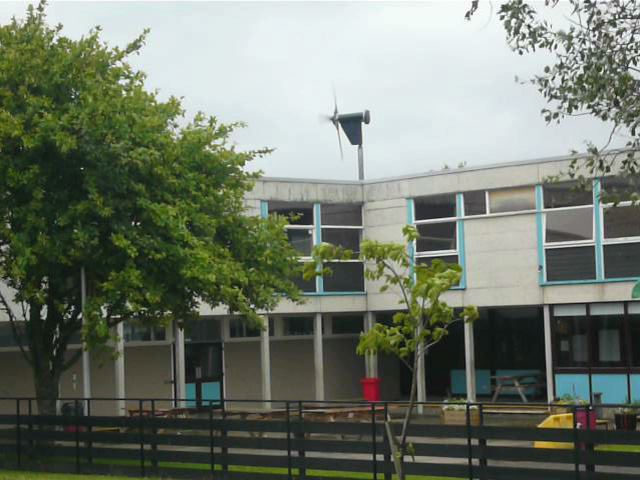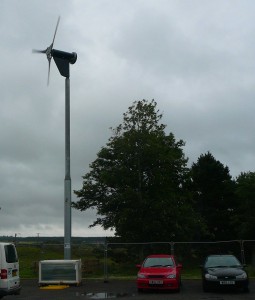This is another rant against misleading salesmen in the small wind industry.
There is a computer model called NOABL that maps the theoretical windspeed over a UK landscape with no trees or buidings. Properly informed experts have always known that the NOABL ‘data’ needs to be treated with care, and often adjusted drastically.
I did a study eight years ago to try to discredit its use in built-up areas (where people actually live). Various early reports have shown the same conclusion. A recent EST report urges caution too. The MCS approved code of practice gives some drastic reduction factors to be applied in the case of being anywhere near to buildings (or trees).
Still we find that you can enter your postcode in any of a number of websites and be given the NOABL windspeed as if it actually meant something. Proven Energy offer a few caveats, but when you see the sites their turbines end up on it is clear that they don’t appreciate the effects of sheltering obstructions.

 Skystream are actively misleading about NOABL, suggesting that the database is likely to underestimate windspeed (hardly likely in a residential area).
Skystream are actively misleading about NOABL, suggesting that the database is likely to underestimate windspeed (hardly likely in a residential area).

I went to Scaled Energy‘s web site and entered the postcode of Waverley Station, Edinburgh EH1 1BB. Back came the confident prediction: 5.7 m/s at 10 m height, followed by a stream of exciting figures including the 5 year payback.

I hasten to say that I came across these examples and there must be many more, so I am not trying to single out these companies for criticism.
Ben Cosh of the Green Company studied a large body of secret data collected by EST and found that the ‘MCS adjusted NOABL’ (MIS 3003) model achieves +65% to ‐85% uncertainty in their prediction of windspeed. The Carbon Trust model achieves +80% to ‐1000%. That’s a shame because the Carbon Trust model gives a much better intuitive feel for the way the wind behaves among buildings. But neither model is remotely reliable.
Garbage in = Garbage out
Ben has a very useful list of questions that you should ask your advisor/saleman:
i.What is the minimum expected income for 3 in 4 years (P75) ?
ii.Does this forecast have less than 20% uncertainty?
iii.How does onsite data correlate with long term validated data sets?
iv.What is the measured wind speed at hub height over a representative period?
v.Does your advisor accept liability for the accuracy of energy forecasts?
vi .Does your advisor have professional indemnity insurance that will cover the entire value of your forecast income for the life of the turbine?
vii .Is this professional indemnity insurance valid if your advisor goes bust?
viii.If the bank is using your house as security, what happens in low wind months?


Pay attention to what the met office are actually claiming.
NOABL does what it says on the tin, but for some reason people don’t ever seem to want to read the label carefully!
Hugh
Your advice on Noabl is very interesting. What is your opinion on the Virtual Met Mast offered at a cost from The met Office.